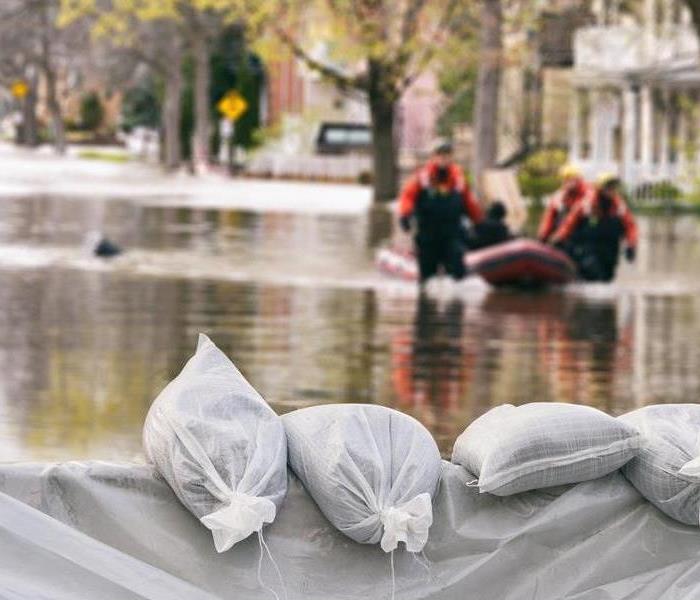Yard Water Management
4/26/2019 (Permalink)
 Many outside flooding issues can be resolved with minor alterations to existing lawn and garden practices.
Many outside flooding issues can be resolved with minor alterations to existing lawn and garden practices.
Weather conditions are widely variable in Edmond, OK. Discover how to control outside flooding and protect your property with a few simple landscaping practices.
1. Roof and Gutter Changes
One of the easiest fixes for excess water pooling around the home involves proper roof and gutter maintenance. If shingles are in disrepair or the gutters are clogged, this can prevent water from flowing cleanly off the roof and through the downspout during a rain storm. This means that rain can spill directly down near the house and seep into the foundation, basement, and crawlspace. In turn, this may require you to contact a flood cleanup service. Prevent this with proper roof inspections, yearly gutter cleanings, and downspout designs that deposit the water farther away from the base of the house.
2. Slope Control
Homes are typically built such that the soil slopes downward toward the border of the property, directing the water flow away from the home. If you notice outside flooding or any type of pooling, purchase additional topsoil or gravel to change the grade of your yard at that location by simply filling in the hole. If the water flow is excessive, it may be beneficial to dig a shallow drainage canal instead, bordered by slightly raised land on either side. These sloping variations are called swales, and can subtly solve rain drainage problems without disrupting the visual elements of your landscaping.
3. Surface Materials
Some ground cover materials are more suitable for wet conditions than others. If you have clay or silt soil, you may have noticed that running water tends to erode channels in your yard and prevent grass from growing in some locations. Plant sturdier shrubs and use heavy mulches or gravel to keep your topsoil layer from slowly washing down the storm drain.
Many outside flooding issues can be resolved with minor alterations to existing lawn and garden practices. Observe how water tends to flow through your property and make corresponding landscaping adjustments.



 24/7 Emergency Service
24/7 Emergency Service